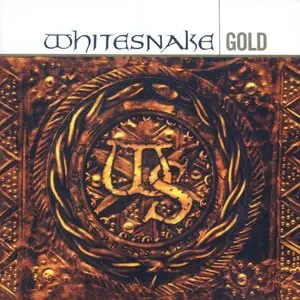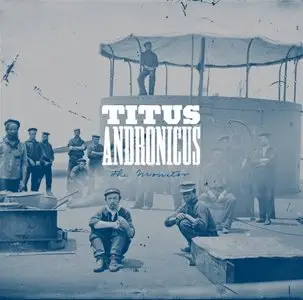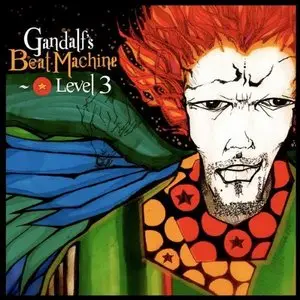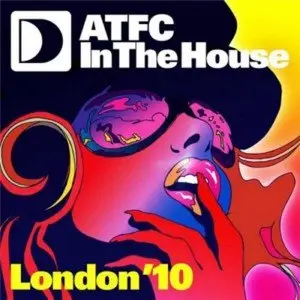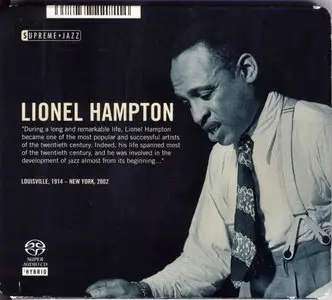| Su | Mo | Tu | We | Th | Fr | Sa |
|---|---|---|---|---|---|---|
| 31 | 1 | 2 | 3 | 4 | 5 | 6 |
| 7 | 8 | 9 | 10 | 11 | 12 | 13 |
| 14 | 15 | 16 | 17 | 18 | 19 | 20 |
| 21 | 22 | 23 | 24 | 25 | 26 | 27 |
| 28 | 1 | 2 | 3 | 4 | 5 | 6 |
Attention❗ To save your time, in order to download anything on this site, you must be registered 👉 HERE. If you do not have a registration yet, it is better to do it right away. ✌

SpicyMags.xyz

SpicyMags.xyz
Roman Haubenstock-Ramati / GRAPHIC MUSIC: Kreise - Batterie - Décisions - Alone 1
Date: 23 Feb 2010 23:28:59
Roman Haubenstock-Ramati / GRAPHIC MUSIC: Kreise - Batterie - Décisions - Alone 1
Classical - Contemporary | EAC = APE + CUE + LOG | Covers | 235 MB
Classical - Contemporary | EAC = APE + CUE + LOG | Covers | 235 MB
Roman Haubenstock-Ramati was born on 27 February 1919 in Krakow where he studied musicology and philosophy as well as composition with Artur Malawski and took private lessons with Jósef Koffler in Lemberg.
1947– 1950 head of the music department of the Krakow Radio
1950 – 1956 director of the State Music Library of Tel Aviv and professor at the Music Academy
1957 return to Europe, worked at the Studio de Musique Concrète in Paris where he drew inspiration from Olivier Messiaen. Then worked as editor and music consultant of Universal Edition Vienna; permanent residence in Vienna. Visiting professor in Buenos Aires, Stockholm and at the Yale University.
1973 to 1989 he accepted an appointment to the Wiener Hochschule für Musik und darstellende Kunst as professor of composition. In addition to composition Haubenstock-Ramati focused on the development of new forms of notation and musical graphic.
In 1959 he organised the first exhibition of ‘Musical Graphic’ in Donaueschingen.
In 1981 he was awarded the ‘Grand Austrian State Prize’.
He died on 3 March 1994 in Vienna, a week after the gala concert in honour of his 75th birthday at the Wiener Konzerthaus.
Mozart & Haydn - Violin Concertos - Rachel Podger - Orchestra of the Age of Enlightenment
Date: 23 Feb 2010 23:23:24
Diane Arkenstone - Best of Diane Arkenstone (2005)
Date: 23 Feb 2010 23:19:32
Diane Arkenstone - Best of Diane Arkenstone (2005)
New Age / World Fusion | Easy CD-DA / Flac & Cue, No Log | Cover included | 5 % recovery | 420 MB | RS.com
Audio CD: March 8, 2005 | Label: Eversound
This 2005 retrospective is culled from Diane Arkenstone's 14 solo albums, plus two brand new tracks. The music on THE BEST OF varies considerably, but there is thematic consistency. As evidenced by the titles alone, it's clear that nature is Arkenstone's musical inspiration.
"Under the Blue Sky" is a pop tune replete with beautiful lyrics about the sea, dreams, and spiritual healing. Other tracks such as "The Hills at Sunset" and "Canyon Dreams" feature Arkenstone's keen compositional abilities. Using an assortment of orchestral timbres, atmospheric effects, and traditional Irish instruments, Arkenstone paints beautiful pictures of nature with each passing phrase. "Across the Sands of Time" and "The River Winds Thru the Night" borrow from the music of Africa. The former uses exotic, Egyptian modalities while the latter centers itself on West African tribal music. In general, this album is a curious blend of New Age, ambient, trance, and pop. Yet, Arkenstone's work is not so easily pigeonholed. Suffice to say, this music represents the illumination of the spirit through sound.cduniverse.com
Carl Heinrich Reinecke, Piano Concertos 1 - 4
Date: 23 Feb 2010 22:08:17
Klaus Hellwig, piano - Alun Francis, conductor | Carl Heinrich Reinecke, Piano Concertos 1 - 4
FLAC 452 Mb | Scans | RS | RAR | Easy CD Ripper Pro
Label: CPO | 1994 | DDD | 2 CD | Classical, instrumental
FLAC 452 Mb | Scans | RS | RAR | Easy CD Ripper Pro
Label: CPO | 1994 | DDD | 2 CD | Classical, instrumental
Best of Ella Fitzgerald: First Lady of Song [3 CD Box Set] - 1993
Date: 23 Feb 2010 21:05:14
Best of Ella Fitzgerald: First Lady of Song [3 CD Box Set] - 1993
Lossless (Flac Image File + Cue + Log + Audio Identifier Report): 1.08 Gb | EAC Secure Mode Rip | Mp3 (Fraunhofer IIS - 320 kbps): 479 Mb | Scans | Rar Files (3% Recovery)
Audio CD (April 20, 1993) - Number of Discs: 3 - Format: Box Set - Label: Verve - Catalog Number: 517898-2
Jazz
Lossless (Flac Image File + Cue + Log + Audio Identifier Report): 1.08 Gb | EAC Secure Mode Rip | Mp3 (Fraunhofer IIS - 320 kbps): 479 Mb | Scans | Rar Files (3% Recovery)
Audio CD (April 20, 1993) - Number of Discs: 3 - Format: Box Set - Label: Verve - Catalog Number: 517898-2
Jazz
Tessa Souter - Obsession (2009) [lossless]
Date: 23 Feb 2010 20:46:03
Tessa Souter - Obsession (2009) [lossless]
Jazz vocal, World music | FLAC tracks, CUE, LOG | tags, playlist, covers | 299 MB
Label: Motema Music
Jazz vocal, World music | FLAC tracks, CUE, LOG | tags, playlist, covers | 299 MB
Label: Motema Music
On her stunning recording, Obsession, Tessa Souter presents a multicultural banquet, that reflects her own conjoined African, Indian, Caribbean, and English bloodlines, as well as her American present. Co-produced by Tessa Souter and Sue Edwards, Obsession (Souter's third CD as a leader), features guitarist Jason Ennis, bassist Gary Wang, drummer Conor Meehan, violinist Todd Reynolds, vocalist Ansel Matthews (backing vocals on two tracks) and accordion player Victor Prieto.
Whitesnake - Gold (2 CD) (2006)
Date: 23 Feb 2010 20:43:27
Whitesnake - Gold (2 CD) (2006)
Hard Rock | MP3 HQ 320 kpbs | tags, playlist, artwork 300 dpi | 358 MB
Label: Geffen Records
Hard Rock | MP3 HQ 320 kpbs | tags, playlist, artwork 300 dpi | 358 MB
Label: Geffen Records
This is one of those rare collections that is pleasing to listen to song after song uninterrupted. David Coverdales' fabulously rich rhythm and blues voice wails, cajoles, howls, pleads and projects a lusty yearning for women that we love to hear. His unique vocal is backed up by the phenominally talented cast of musicians that can bring very sophisticated rock sound rolling on and on (John Sykes (guitar), Steve Vai (guitar), Adrian Vandenberg (guitar), Micky Moody (guitar), Rudy Sarzo (bass), Neil Murray (bass), Jon Lord (keyboards/organ), Tommy Aldridge (drums), Aynsley Dunbar (drums), Ian Paice (drums), Cozy Powell (drums), etc).
Titus Andronicus - The Monitor (2010)
Date: 23 Feb 2010 18:22:30
Titus Andronicus - The Monitor (2010)
Indie Rock | MP3 192 kbps | 65:30 min | 90 MB
Label: XL Recordings | Released: 2010 | HF/RS
Indie Rock | MP3 192 kbps | 65:30 min | 90 MB
Label: XL Recordings | Released: 2010 | HF/RS
Titus Andronicus is an indie rock band from Glen Rock, New Jersey formed in 2005. The group takes its name from the Shakespeare play Titus Andronicus. Their debut album, The Airing of Grievances has received widespread acclaim. The album's loud, heavily distorted guitars are influenced by the shoegaze genre, while the lyrics and song titles are references to various books and other forms of entertainment (such as the album title, from the Seinfeld episode, "The Strike", about Festivus).
Eligh - Gandalf´s Beat Machine Level 3 (2009)
Date: 23 Feb 2010 18:13:50
Eligh - Gandalf´s Beat Machine Level 3 (2009)
Hip Hop - Rap| MP3 180 kbps | 60:13 min | 79 MB
Label: Legendary Music | Release Date: November 17, 2009 | HF/RS
Hip Hop - Rap| MP3 180 kbps | 60:13 min | 79 MB
Label: Legendary Music | Release Date: November 17, 2009 | HF/RS
An outside-of-the-box MC and producer, Eligh was an important contributor to the development of Cali's hip-hop underground in the mid- to late '90s as he helped construct the sound of his crew, the Living Legends, with his productions. His inspiration for making hip-hop music came in the mid-'80s from the cult classic Beat Street and the LL Cool J cut "I'm Bad." In high school, the Los Angeles-born rapper/producer co-founded a hip-hop duo with MC Scarub called the Boogalu Badboys, but when they crossed paths with another eager rapper, Murs, the three became 3 Melancholy Gypsys (or 3MG).
Lionel Hampton - Lionel Hampton (Supreme Jazz)
Date: 23 Feb 2010 17:24:24
Lionel Hampton - Lionel Hampton (Supreme Jazz)
Jazz | EAC | FLAC (Compressed CD Image, Level=5), CUE, LOG, Rapidshare, 5 parts, 402 MB. total
Complete Scans (JPG): Unmodified (13,6 MB.) & Modified (41,7 MB.)
WinRar Archive with 5% recovery record included
Audio CD (March 30, 2006), Label: Supreme Jazz, Original Release Date: March 27, 2006, 1 CD
Jazz | EAC | FLAC (Compressed CD Image, Level=5), CUE, LOG, Rapidshare, 5 parts, 402 MB. total
Complete Scans (JPG): Unmodified (13,6 MB.) & Modified (41,7 MB.)
WinRar Archive with 5% recovery record included
Audio CD (March 30, 2006), Label: Supreme Jazz, Original Release Date: March 27, 2006, 1 CD
Lionel Hampton with; Candido, an unknown person, Al Caiola, George Mraz, Richie Pratt, Barry Kiener,
Tom Warrington, Buddy Rich, Candido Camero, Steve Marcus, Gary Pribek, Paul Moen, Chick Corea,
Gayle Moran, and others.

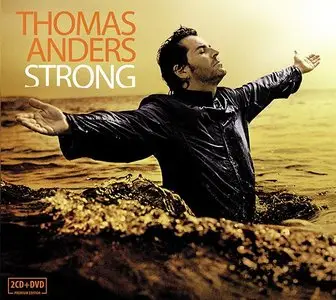
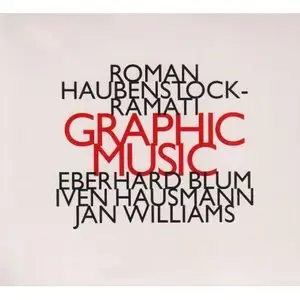

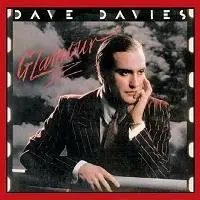


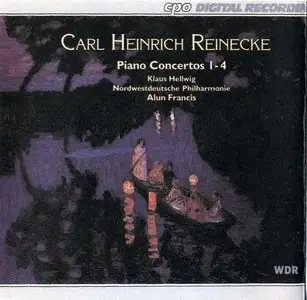
![Best of Ella Fitzgerald: First Lady of Song [3 CD Box Set] - 1993](https://pixhost.icu/avaxhome/e1/b9/0012b9e1_medium.jpeg)
![Tessa Souter - Obsession (2009) [lossless]](https://pixhost.icu/avaxhome/38/b9/0012b938_medium.jpeg)
